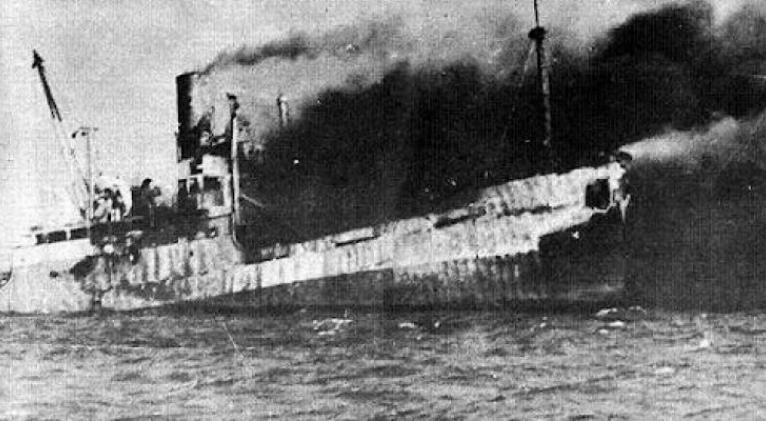Unforgettable Events About the Victory of Playa Girón
especiales

Shortly before Dwight Eisenhower died, the first president to confront the nascent Revolution of January 1, 1959, he confessed in his memoirs: “In a matter of weeks, after Castro entered Havana, we, in the government, began to examine the measures that could be effective in repressing Castro.”
Consequently, from the beginning of 1960, Operation Pluto was undertaken, which would lead to the invasion of a brigade of more than a thousand mercenaries with air and maritime support in the Bay of Pigs on April 17, 1961, which also considered a previous incursion of bombings of the main airports to eliminate the meager Revolutionary Air Force.
That would be the main prelude maneuver to the aggression plotted within a program of terrorist actions throughout the country, for which some 75 tons of explosives and 46.5 tons of weapons and other means were infiltrated by air and sea destined for urban organizations and bands of rebels in the countryside, directed by the CIA.
Upon assuming the White House in January 1961, Operation Pluto was inherited by Democratic President John F. Kennedy, who had doubts about the proper conduct of the plan and, according to declassified documents, imposed his conditions on the CIA: under no circumstances the US government should appear linked to the invasion.
But the young president allowed himself to be persuaded, the invading brigade left from its bases in Guatemala and Nicaragua, sent by a boss of the Central Intelligence Agency who assured the amazing prophecy that upon arriving on Cuban soil they would take their transports and undertake a tour through the Central Highway to Havana without firing a shot, cheered by the people as their liberators.
They failed from the beginning, when on April 15 the attempts to destroy the Revolutionary Air Force with the bombings that day of the airports of Ciudad Libertad, San Antonio de los Baños and Santiago de Cuba were very far from ending the previously Cuban planes distributed in protected places.
On the contrary, of the eight B-26 aggressor planes with false Cuban insignia that attacked the airfields, more than half were hit by the anti-aircraft defenses and that ill-fated attack only served to eliminate the surprise factor of the attack.
In those decisive hours, the Revolutionary Armed Forces, together with the State Security Organs and supported by the people organized in the Committees for the Defense of the Revolution, carried out a broad and rapid action to arrest the counterrevolutionary base throughout the country, in what was popularly called the worm collection that made it impossible to destabilize the nation with terrorist methods.
The cunning bombing received the harshest and bravest response when Commander in Chief Fidel Castro, on April 16, 1961, in addition to denouncing the ongoing aggression, declared the socialist character of the Revolution and called for general mobilization, during the burial of the victims of the attack on Ciudad Libertad in Havana, in an improvised event near the entrance of Colón Cemetery and in the face of what clearly seemed like an imminent direct aggression from the United States.
In those hours, the UN plenary session in New York became the battlefield against Washington's lies in its efforts to present the event as an internal uprising, an attempt that was dismantled word by word by Cuban Foreign Minister Raúl Roa, who won the sympathy and support of the majority of Third World countries, especially Latin America, and of the then Socialist Field, which caused a large part of imperialism's media plans to collapse.
By then, a feeling of wrongness began to develop in the most lucid minds of the US government before the first mercenary arrived on the Cuban coast.
Kennedy's then presidential advisor, Arthur M. Schlesinger, wrote a report to the president in which he expressed:
“The reality is that Fidel Castro turned out to be a much more formidable enemy and to be in command of a much better organized regime than anyone had assumed. His patrols located the invasion almost immediately. His planes reacted quickly and vigorously. His police eliminated any possibility of rebellion behind the lines. His soldiers remained loyal and fought bravely.
But beyond American assessments, the last word would be given on the battlefield. During the early hours of April 17, 1961, on the coasts of Playa Girón and Playa Larga, a group of mercenaries upon arrival were confronted by small garrisons of militiamen who responded with lead and fire and inflicted the first casualties on them as a preview of what awaited them.
On the 19th, the final battle would be fought, directed on the ground by Commander in Chief Fidel Castro, at the head of the column of tanks, infantry and together with planes from our air force that under his order sank the logistical support ships in the first 48 hours of the invasion, which made impossible the strategic idea of Operation Pluto to establish for at least 72 hours a beachhead for the appointment of a puppet government that would request direct US intervention.
With the victory of Playa Girón, what until then seemed like a chimera was demonstrated and paralyzed revolutionary thinking in the region and especially in our country, a small island that only 90 miles from the United States could forever break half a century of Yankee domination and raised the hopes of other peoples submerged by dictatorships supported by Washington.
Translated by Amilkal Labañino / CubaSí Translation Staff














Add new comment